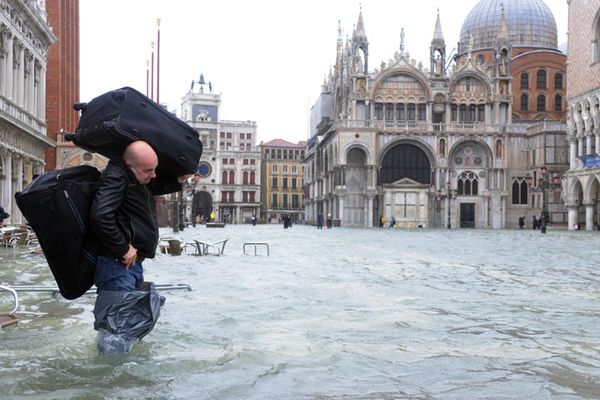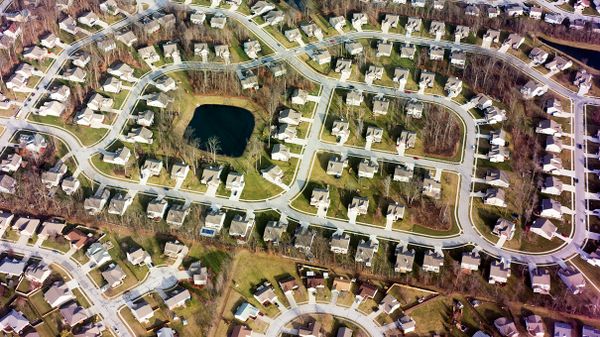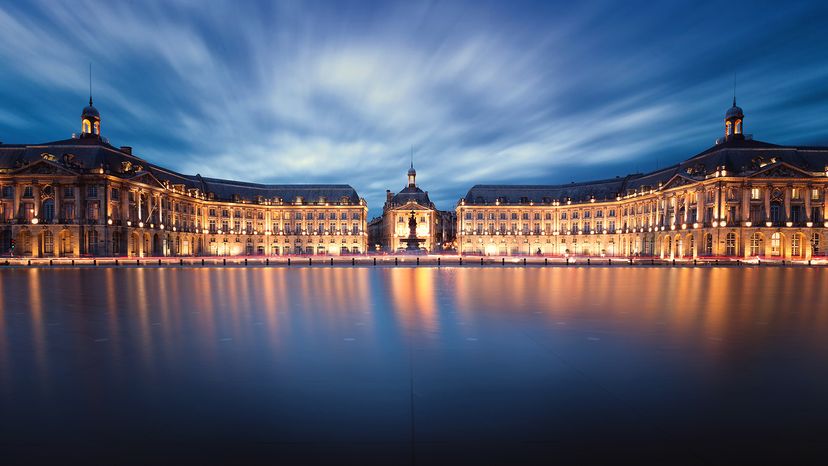
Bordeaux, France, has long been known for its wine, but today, the city also draws tens of thousands of visitors annually with an attraction all ages can enjoy. Created in 2006, Bordeaux's Water Mirror – or Miroir d'Eau for the French speaking – is situated across from the Place de la Bourse, an 18th-century square that was commissioned by King Louis XV and faces the Garonne River.
The penultimate king before the French Revolution might be pleased to learn that the Water Mirror, often with Place de la Bourse in the background, is currently the most-photographed site in Bordeaux, says the Bordeaux Tourism & Conventions. It's also listed as a contemporary World Heritage Site by UNESCO.
Advertisement
Sounds fascinating, but what exactly is a water mirror? It's like a reflecting pool in that it displays a reflection of the surrounding architecture. However, unlike the Lincoln Memorial Reflecting Pool, for example, which is between 18 and 30 inches deep (46 and 72 centimeters), a water mirror is shallow. Bordeaux's is just 2 centimeters, or not quite an inch, deep. Also unlike the Lincoln pool, Bordeaux's Water Mirror invites visitors to step in. On any given day, barefoot Bordelais and tourists young and old can be seen walking across the expanse. Toddlers like to roll around in it, and teens use it for filming a video of their latest dance routine.
When it was launched, the Bordeaux Water Mirror was the largest reflecting pool in the world, with an area of 3,450 square meters (37,135 square feet), says Nicolas Corne, press relations officer at Bordeaux City Hall, in an email.
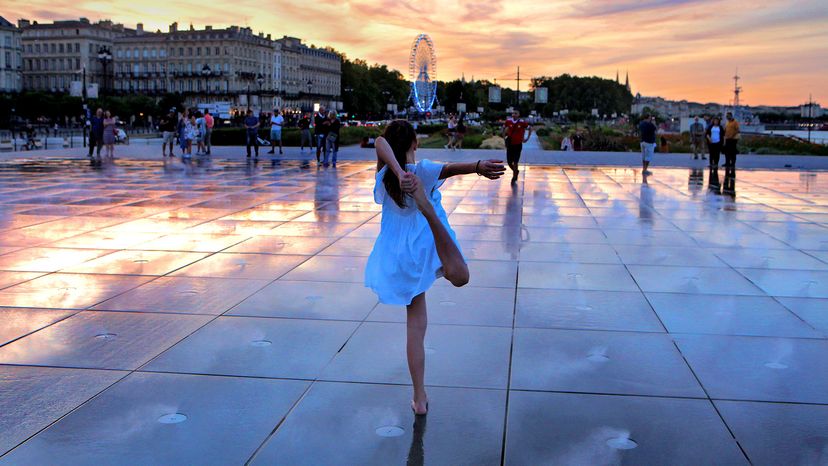
While the location today is one of photographable beauty, that wasn't the case a few decades ago. The site had been occupied by parking areas and industrial activity, creating a barrier to the quays of the Garonne, notes Stéphane Llorca, managing director, JML Water Feature Design, the firm that handled the project. The city of Bordeaux, driven by Mayor Alain Juppé and the Communauté Urbaine des Bordeaux (CUB) inaugurated an ambitious plan to transform a vast area and reconnect the city with the river.
"Upon his arrival in Bordeaux in 1995, the former mayor Alain Juppé launched several urban projects aimed at renovating the city and restoring its influence," explains Corne. "In particular, he chose to allow the people of Bordeaux to return to their Garonne River."
In 1999, the CUB launched a competition among five teams of architects, and JML was the winning team. The mirror was part of the waterfront revitalization designed by landscape architect Michel Corajoud and architect Pierre Gangnet. Llorca says that inspiration for the concept came from Venice, Italy – the acqua alta (high water) and the partial flooding of the Piazza San Marco. But unlike the Italian flooding, which can sometimes be significant, the Bordeaux water levels are kept closely in check.
"The depth of the water was defined in order to ease public interaction" and maintain a "manageable volume of water," says Llorca. As the water cycles through the three experiences, it is constantly filtered and chemically treated. The concept is similar to a large closed-circuit swimming pool. Paved with granite, the Bordeaux Water Mirror took two years to construct.
As incredible as the water mirror is to view from the surface, it's what's underneath that counts. The shallow pool of water is surrounded by a drain, and it has an underground reservoir of 800 cubic meters (28,252 cubic feet) that, thanks to its series of pumps, enables the mirror to progress through several continuous cycles. There are 15 minutes of a few centimeters of water followed by five minutes of stopped water flow and a wet surface, then five minutes of fog made possible by hundreds of nozzles specifically designed for this purpose.
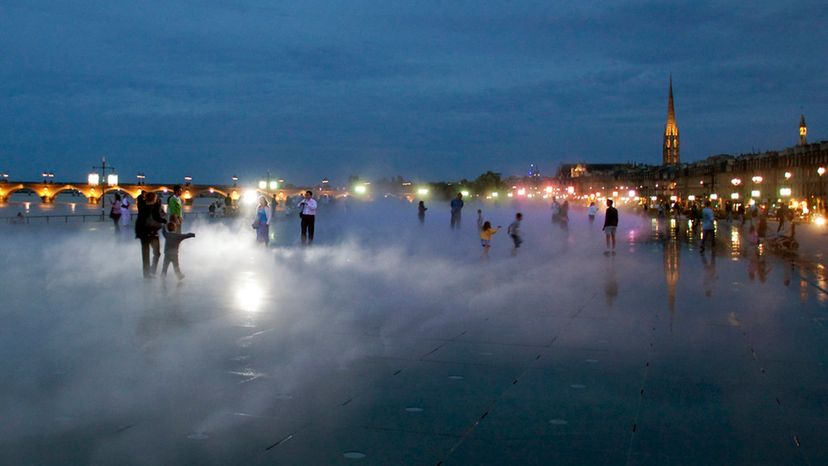
"The entire underground of the mirror is a technical room," states Llorca. "It is an old port warehouse that we have refurbished and is accommodating a large reservoir and all the mechanical and electrical systems."
The water mirror is drained once a year, and its water is recycled for street cleaning. Although Bordeaux has mild winters – average lows are in the upper 30s Fahrenheit (single digits in Celsius) – the mirror's operation is halted for several weeks to avoid the risk of freezing. In the event of a big festival or concert, like the Bordeaux Fête le Fleuve, the water flow can be easily stopped, making it appear empty on the surface. Everything is controlled by computer, according to Corne.
The Bordeaux mirror was the first of its kind, but it has inspired imitators in cities around the world.
"The success of the water mirror in Bordeaux has precipitated a new trend in the public design realm," says Llorca. "It is now recognized as a 'standard.'"
Advertisement
